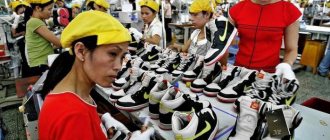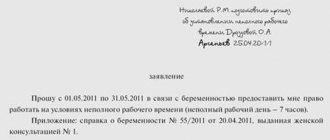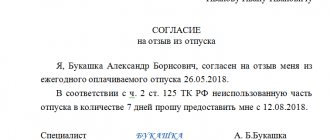Types of mental states
A state of intense work activity that occurs during work in extreme conditions (the state of an athlete at a competition, a test pilot while testing a new car, a circus performer when performing a complex trick, etc.).
Mental stress is caused by the presence of an overly significant goal or increased demands on the employee. It can also be determined by a strong motivation to achieve a result or the high cost of a mistake. It is characterized by very high activity of the entire nervous system. Stress is a state of prolonged and increased tension associated with the inability to adapt to the demands of the environment. This condition is caused by prolonged exposure to environmental factors that exceed the body’s adaptation capabilities.
Disability criteria
Often, one examined person may be diagnosed with disorders of several different organs and systems of varying severity. All violations are recorded in accordance with the International Classification of Diseases, Tenth Revision.
After that, an assessment is made of the employee’s ability to perform certain professional duties, taking into account the existing violations. The final stage is the calculation of indicators that limit the life activity of the individual.
These criteria include human abilities:
- Serve yourself.
- Move independently.
- Control your behavior.
- Communication.
- Education.
- Orientation in space, time, self.
- Labor activity.
The severity of the load on the body during the corresponding work is assessed for the following systems: cardiovascular, musculoskeletal, nervous, respiratory, genitourinary and others.
Emotional stress production characteristics
When filling out the characteristics for the ITU, you must be guided by these recommendations. But here it should be remembered that the IPR is advisory in nature and a disabled person may not follow these recommendations, and therefore not provide this document to management. In this case, filling out the characteristics will be carried out without taking into account ITU recommendations (as is).
If an employee is already working and becomes disabled during work or due to illness, he may need additional accommodations or a special work schedule that management must provide. Usually all recommendations are contained in an individual rehabilitation program. The employee has the right to provide it to the administration or not to provide it if he does not want to follow these recommendations.
Production characteristics for ITU: sample filling - 2020
- Full name of the employee.
- Full name and location of the enterprise that provides the description.
- The workshop (department) in which a person works.
- Describe how the labor process of this employee is organized (individual work, team work, etc.).
- The position in which the employee works at the time of passing the examination, or in which he worked before dismissal.
- Additional information about the position or profession (qualification, rank, related specialties, etc.).
- Description of the work performed and its characteristics: tension, heaviness, monotony, etc. As a rule, this data can be taken from the SOUT (certification) card of the workplace.
- Does the employee have benefits (shorter working hours, additional leave, etc.).
- Indicate whether the employer can transfer the person to an easier job.
- It is necessary to write whether the person copes with the current job, if there are production standards, indicate them as well.
- Provide wage amounts for the last year, broken down by month.
- Indicate the number of sick leaves and their duration for the last year.
This is interesting: Will there be an annual bonus at Sberbank on maternity leave?
A worker needs a performance characteristic if he undergoes a medical and social examination examination (MSE) to obtain a disability group. The responsibility for filling it out falls on the employer, who does not have the right to refuse to provide the employee with this document. The production characteristics for ITU, the form and an example of how to fill it out can be seen below.
Emotional load
- — “the degree of responsibility for the results of one’s own activities. The significance of the error” indicates the extent to which an employee can influence the result of his own work at various levels of complexity of the activity being performed. With increasing complexity, the degree of responsibility increases, since erroneous actions lead to additional efforts on the part of the employee or the whole team, which accordingly leads to an increase in emotional stress.
- - “degree of risk to one’s own life” - the likelihood of an undesirable event occurring in the presence of traumatic factors (explosion, impact, spontaneous combustion, etc.).
- - “degree of responsibility for the safety of other persons” - the possibility of undesirable events occurring in the event of the presence of traumatic factors during collective work. Only direct responsibility for the safety of other persons, as provided for in the job description, is taken into account.
- - “the number of conflict production situations caused by professional activities per shift” - is determined on the basis of time-keeping observations.
- — the nature of the work is auxiliary;
- — the degree of risk to one’s own life is absent;
- — there is no degree of responsibility for the safety of other persons;
- — the number of conflict situations caused by professional activities per shift is absent.
NEW CLASSIFICATION OF WORKING CONDITIONS AND FUNCTIONAL DISORDERS OF THE BODY IN MEDICAL EXAMINATION
3. Creative work (scientists, writers, composers, artists, painters, architects, designers). The work involves the creation of new algorithms based on many years of training and high qualifications. Workers must have good memory, initiative, and the ability to concentrate for long periods of time, which leads to increased neuro-emotional stress.
IIa - (energy consumption 175-232 W) - work associated with constant walking, moving small (up to 1 kg) objects in a standing or sitting position and requiring a certain physical exertion (a number of professions in mechanical assembly shops of machine-building enterprises, in spinning and weaving production - weaver, spinner, winder, carpenter, carpenter, painter, plasterer, mechanic for repairing equipment, agricultural machinery, etc.).
Chapter 2
Physical well-being component
reflects, as S. L. Rubinstein said, organic well-being, the tone of the body’s vital activity and those diffuse, weakly localized organic sensations that emanate from the internal organs.
Kulikov considers mood as an integral indicator of feelings and emotions being experienced at the moment, and not as a special type of emotional experience, along with emotions and affects. He also distinguishes between dominant (stable) and current (current) moods.
Categories of labor severity for VTEK
The examination of workers is regulated in accordance with the order of the Ministry of Labor and Social Protection of the Russian Federation No. 664n dated September 29, 2015. It indicates the classification parameters that must be used by the ITU to assess the correspondence of groups of diseases to categories of factors affecting the wear and tear of the body.
- Physical level indicators: humidity, temperature, noise, gas pollution and others.
- Chemical level indicators: influence of chemical and pharmacological substances.
- Biological level indicators: the influence of bacteria, viruses and other living beings.
Classification of working environment factors and labor process
Emotional load for production characteristics
It must be indicated whether this particular worker is provided with certain facilitated conditions, and whether there is an opportunity for this at all. The reason may be frequent illnesses of the subject - in this case you need to refer to the medical documents that the citizen brings.
- — duration of concentrated observation (% of shift time) — up to 40;
- — the density of signals (light, sound) and messages on average per 1 hour of operation is absent;
- — number of production facilities for simultaneous observation — up to 2;
- - size of the object of discrimination during the duration of concentrated attention (% of the shift time) - more than 5 mm 100% of the shift time;
- - work with optical instruments (microscope, magnifying glass, etc.) with the duration of concentrated observation (% of the shift time) - absent;
- — monitoring of the video terminal screen (hours per shift) - absent;
- - load on the auditory analyzer - speech is heard at a distance of up to 3.5 m;
- - load on the vocal apparatus (total number of hours spoken per week) - up to 12.
Sensory load for vtek filling sample
Intellectual loads.
Brief description of the work performed: Welding of parts. Reading the operating chart, visual and instrumental quality control, quality control. The result of assessing working conditions according to indicators of the intensity of the labor process:.
Number of production facilities for simultaneous observation. The number of conflict situations caused by professional activities per shift. The number of elements of techniques necessary to implement a simple task or repetitive operations.
Duration in seconds The monotony of the production environment is a time of passive observation of the progress of technical work. Conclusion: the workplace meets the requirements of regulatory and technical documentation. Class of working conditions - 2 permissible.
Leading labor protection engineer. Tolyatti, Yuzhnoye Highway, Certificate of accreditation from Methods of measurement and assessment: Guide P 2. Criteria and classification of working conditions.
Brief description of the work performed: Organization and maintenance of accounting at the enterprise.
Work on a PC up to 5 hours. Conclusion: the workplace does not meet the requirements of regulatory and technical documentation.
Class of working conditions - 3. Appendix 2 Example of drawing up a protocol on indicators of the severity of the labor process for a mechanical assembly mechanic. Appendix 3 Example of drawing up a protocol on indicators of the severity of the labor process for an electric and gas welder………….
Appendix 4 An example of drawing up a protocol on indicators of the severity of the labor process for a chief accountant………….. Appendix 5 An example of drawing up a protocol on indicators of the intensity of the labor process for a mechanic.
Appendix 6 An example of drawing up a protocol on indicators of the intensity of the labor process for an electric and gas welder Appendix 7 An example of drawing up a protocol on indicators of the intensity of the labor process for a chief accountant...
Sensory load production characteristics what to write
The loads have expert estimates, which the researcher establishes based on studying the functional responsibilities of workers, work regulations, and observing the activity algorithm. Example 1. The actual values of classes of working conditions according to indicators of intensity of the labor process are entered in paragraph Example 2. Example 3.
Brief description of the work performed: Welding of parts. Reading the operating chart, visual and instrumental quality control, quality control. The result of assessing working conditions according to indicators of the intensity of the labor process:.
Number of production facilities for simultaneous observation. The number of conflict situations caused by professional activities per shift. The number of elements of techniques necessary to implement a simple task or repetitive operations.
Duration in seconds
senior accountant, Sensory load (duration of concentrated observation (in and auditory analyzer, monotony of load).
When filling out the characteristics for the ITU, you must be guided by these recommendations. But here it should be remembered that the IPR is advisory in nature and a disabled person may not follow these recommendations, and therefore not provide this document to management. In this case, filling out the characteristics will be carried out without taking into account the ITU recommendations as is.
.
.
.
.
How to correctly fill out the production characteristics form for ITU in 2020
- working conditions over the past year;
- the harmfulness of the work performed;
- compliance of the workplace with hygiene standards and labor protection requirements;
- number and duration of business trips;
- recent average salary data;
- number of sick days and diagnosis with documentary evidence.
It is worth explaining briefly, to the point, clearly and understandably. If you write that the employee calmly fulfills his obligations, passes the plan and has no relaxing conditions, then the ITU bureau will not understand the reason for the appeal.
Filling out the production characteristics for ISE: sample filling
To receive it, submit:
- identification;
- referral to ITU;
- data on the conditions under which the work is performed;
- sample production specification;
- a certificate confirming the assignment of a disability group;
- recommended program according to which rehabilitation should take place.
It is possible to appeal the previous expert’s verdict to the ITU bureau at the federal level. To do this, you will need to submit applications and a package of documentation. An independent examination may be required.
Legal regulation When conducting a medical and sanitary examination, they rely on the norms of the Government Decree of August 13, 1996 No. 965.
Form 088у-06, which is required for submission, was approved by Order of the Ministry of Health No. 77 of January 31, 2007.
Forms of labor activity
Physical stress on the body during work can be caused primarily by either physical work or stress on the central nervous system. Depending on this, work is characterized by heaviness or tension.
class 2 - acceptable
(moderate labor intensity) - working conditions characterized by such levels of environmental factors and the labor process that do not exceed the established hygienic standards for workplaces.
Changes in the functional state of the body are restored during regulated rest or at the beginning of the next shift; they should not have an adverse effect in the immediate and long-term period on the health of the worker and his offspring.
The tension of the labor process
5.1. "Actual duration of the working day" . Separated into a separate category, unlike other classifications. This is due to the fact that, regardless of the number of shifts and the rhythm of work in production conditions, the actual duration of the working day ranges from 6 to 8 hours (teachers, doctors, heads of enterprises and organizations, accountants, etc.
; It is important to take into account that irregular working hours, for example, for directors, heads of departments, are not taken into account; the calculation is based on 40 hours of the working week). A number of professions have shift lengths of 12 hours or more (doctors, nurses, security guards, watchmen, etc.).
The longer the work, the greater the total load per shift, and, accordingly, the higher the labor intensity.
Emotional stress
4 degree 3 class (3.4) - working conditions under which severe forms of occupational diseases can occur, there is a significant increase in the number of chronic diseases and high levels of morbidity with temporary disability;
3. “distribution of functions according to the degree of complexity of the task.” Any work activity is characterized by the distribution of functions between workers. Accordingly, the more functions assigned to an employee, the higher the intensity of his work. Thus, work activity containing simple functions aimed at processing and performing a specific task does not lead to significant labor intensity. An example of such activity is the work of a laboratory assistant (class 1). Tension increases when processing, execution and subsequent verification of the task (class 2) is carried out, which is typical for such professions as nurses, telephone operators, etc. Processing, checking and, in addition, monitoring the completion of a task indicates a greater degree of complexity of the functions performed by the employee, and, accordingly, the intensity of labor is more manifested (industrial foreman, telegraph operators, designers, drivers - class 3.1). The most complex function is preliminary preparatory work with the subsequent distribution of tasks to other persons (class 3.2), which is typical for such professions as managers of industrial enterprises, air traffic controllers, scientists, doctors, etc.
Question No. 37
Rubinstein talks about the special connection between emotions and human activity. Emotion arises from the ratio - positive or negative - of the results of an action to the need that is its motive. This connection is mutual: on the one hand, the course and outcome of the activity affects his emotions, on the other hand, emotions influence the activity. Depending on whether the result of the action turns out to be consistent with the most pressing need or not, the emotion will be positive or negative.
Category of severity of work performed in the production characteristics form
The longest break is considered to be lunch time. As a rule, its duration ranges from 30 minutes to 1.5 hours. If the work is classified as complex, then the establishment of breaks is regulated more often and they are longer in duration.
- In order for an employee to quickly get involved in work, it is necessary to perform industrial gymnastics;
- to restore working capacity, pauses amount to up to 15% of working time;
- breaks help prevent overwork.
Are you here
A performance characteristic is a document that is used to assess the professional and labor qualities of an employee. The document must be signed by the manager and certified by the seal of the organization; if necessary, it can be provided at the place of request. Most often, such a characteristic is required for medical institutions when conducting a medical-sociological examination (hereinafter referred to as ITU).
- The document must be drawn up from a third party.
- To be filled out on a standard A4 sheet.
- Can be written in past or present tense.
- It can be signed by the head of the enterprise or the head of the personnel department.
Sample of filling out the production characteristics for ITU
A medical and social examination (MSE) is carried out to determine the degree of disability of a particular citizen in connection with a disease identified in him or in connection with injuries he has received. Based on its results, an individual rehabilitation plan (IRP) is drawn up, which should help a person who has certain limitations in work activities adapt to new living conditions.
When answering the question why you need a reference from your place of work, first of all, it should be noted that this document will be of an official nature. It is considered during the review of documents and is necessarily taken into account when writing a conclusion.
Psychology in the problem of security
Types of labor safety briefings. Cases in which special training of workers is carried out. Basic requirements for heating and ventilation of industrial premises. Protection against dangerous touch and step voltages.
The main environmental factors influencing human life. Social and mental environmental factors. Evolution of the human environment. States of interaction between man and the technosphere, characteristic of human life.
Intellectual loads
The most common types of incidents leading to fatal accidents are: road traffic accidents, falls from heights, falls, collapses and collapses of objects and materials, exposure to moving and rotating parts, flying objects and parts. The most common sources of injury are cars, power equipment, tractors, and metal-cutting machines.
5.3. “Availability of regulated breaks and their duration (excluding lunch break)”
. Regulated breaks should include only those breaks that are included in the working time regulations on the basis of official internal production documents, such as a collective agreement, an order from the director of an enterprise or organization, or on the basis of government documents - sanitary norms and rules, industry rules on labor protection and others .
Research work: “The influence of academic load on the emotional state of students”
The main aspects of the research work affected indicators of the organization of the educational process, the rationality of the distribution of work and rest during the day and indicators of the emotional state, such as the level of anxiety, well-being, activity and mood. One of the factors influencing the success of educational activities is the presence of some features in the structure and manifestation of mental and personal qualities of students. To identify this subjective factor of activity success, three groups of students with different academic performance were compared on a number of indicators, reflecting some features of their mental processes, personality traits and qualities. The purpose of our study was to study the influence of academic load on the emotional state of 1st year students. The choice of methods for collecting data was determined by the following criteria: the ability to track the daily and weekly study load of first-year students, and to study the impact of the study load. The study involved first-year students of the Private Professional Educational Institution "GAZPROM TECHNIKUM NOVIY URENGOY", aged from 16 to 18 years, a total of 120 people, of which 75 were boys and 45 were girls. The experimental study took place in three stages. Four methods were used in the experimental study:
Thus, we can conclude that the dominant state of students during educational activities is the state of aggressiveness with an average level of 65.7%. Most likely, this is due to instrumental aggression, which is explicated as a means - methods - techniques, projected to achieve any significant goal, aimed at achieving a utilitarian goal. The state of anxiety lags slightly behind with an average level of 57.1%, this may indicate that students are not yet worried about studying, since the study session is far away. A certain level of anxiety is a natural and obligatory feature of an individual’s active activity. Each person has their own optimal or desired level of anxiety - this is the so-called useful anxiety. The priority should be to optimize the distribution of the educational load, therefore, it is possible to correct the emotional state only if you organize effective interaction between all participants in the educational process - administration, teachers, parents, and the students themselves.
What is labor intensity
- The working specialty is analyzed from the point of view of all the given values. It is prohibited to use the given indicators selectively.
- The class of working conditions is found for each of the given values.
- In the event that a working specialty lacks one of the parameters (for example, an employee does not need to monitor screens), it is assigned class 1 NT. You can't just skip a parameter.
LT is a value that reflects the load on the central nervous system during the performance of official duties. The indicator gives an idea of the load on the nervous system, emotional state, and sensory organs. It is especially indicative for managers, pilots and drivers. Representatives of these professions experience the greatest load on the central nervous system. The factor of physical fatigue is not taken into account. Work intensity is one of the criteria for professional selection. The indicator is also used when arranging a comfortable workplace.
This is interesting: A labor veteran and a factory veteran are the same thing
Chapter 2
Kulikov considers mood as an integral indicator of feelings and emotions being experienced at the moment, and not as a special type of emotional experience, along with emotions and affects. He also distinguishes between dominant (stable) and current (current) moods.
It should be noted that there is some confusion in the opinions of some psychologists regarding the awareness of the cause of mood. For example, in the book “General Psychology. Course of lectures" (1998), the author of the chapter on emotions writes that mood is an unconscious
a person’s assessment of how favorable circumstances are for him; The author immediately writes that the reasons for this or that mood are not always clear (hence, not conscious), but they always exist and can be determined. “All this allows us to note different degrees of awareness of mood,” writes the author (p. 367).











